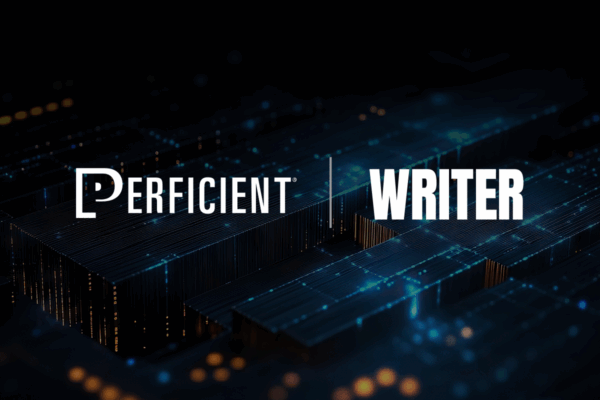Introduction
Imagine just as you’re sipping your Monday morning coffee and looking forward to a hopefully quiet week in the office, your Outlook dings and you see that your bank’s primary federal regulator is demanding the full input – regulatory report lineage for dozens of numbers on both sides of the balance sheet and the income statement for your latest financial report filed with the regulator. The full first day letter responses are due next Monday, and as your headache starts you remember that the spreadsheet owner is on leave; the ETL developer is debugging a separate pipeline; and your overworked and understaffed reporting team has three different ad hoc diagrams that neither match nor reconcile.
If you can relate to that scenario, or your back starts to tighten in empathy, you’re not alone. Artificial Intelligence (“AI”) driven data lineage for banks is no longer a nice-to-have. We at Perficient working with our clients in banking, insurance, credit unions, and asset managers find that it’s the practical answer to audit pressure, model risk (remember Lehman Brothers and Bear Stearns), and the brittle manual processes that create blind spots. This blog post explains what AI-driven lineage actually delivers, why it matters for banks today, and a phased roadmap Chief Data Officers (“CDOs”) can use to get from pilot to production.
Why AI-driven data lineage for banks matters today
Regulatory pressure and real-world consequences
Regulators and supervisors emphasize demonstrable lineage, timely reconciliation, and governance evidence. In practice, financial services firms must show not just who touched data, but what data enrichment and/or transformations happened, why decisions used specific fields, and how controls were applied—especially under BCBS 239 guidance and evolving supervisory expectations.
In addition, as a former Risk Manager, the author knows that he would have wanted and has spoken to a plethora of financial services executives who want to know that the decisions they’re making on liquidity funding, investments, recording P&L, and hedging trades are based on the correct numbers. This is especially challenging at global firms that operate in in a transaction heavy environment with constantly changing political, interest rate, foreign exchange and credit risk environment.
Operational risks that keep CDOs up at night
Manual lineage—spreadsheets, tribal knowledge, and siloed code—creates slow audits, delayed incident response, and fragile model governance. AI-driven lineage automates discovery and keeps lineage living and queryable, turning reactive fire drills into documented, repeatable processes that will greatly shorten the time QA tickets are closed and reduce compensation costs for misdirected funds. It also provides a scalable foundation for governed data practices without sacrificing traceability.
What AI-driven lineage and controls actually do (written by and for non-tech staff)
At its core, AI-driven data lineage combines automated scanning of code, SQL, ETL jobs, APIs, and metadata with semantic analysis that links technical fields to business concepts. Instead of a static map, executives using AI-driven data lineage get a living graph that shows data provenance at the field level: where a value originated, which transformations touched it, and which reports, models, or downstream services consume it.
AI adds value by surfacing hidden links. Natural language processing reads table descriptions, SQL comments, and even README files (yes they do still exist out there) to suggest business-term mappings that close the business-IT gap. That semantic layer is what turns a technical lineage graph into audit-ready evidence that regulators or auditors can understand.
How AI fixes the pain points keeping CDOs up at night
Faster audits: As a consultant at Perficient, I have seen AI-driven lineage that after implementation allowed executives to answer traceability questions in hours rather than weeks. Automated evidence packages—exportable lineage views and transformation logs—provide auditors with a reproducible trail.
Root-cause and incident response: When a report or model spikes, impact analysis highlights which datasets and pipelines are involved, highlighting responsibility and accountability, speeding remediation and alleviating downstream impact.
Model safety and feature provenance: Lineage that includes training datasets and feature transformations enables validation of model inputs, reproducibility of training data, and enforcement of data controls—supporting explainability and governance requirements. That allows your P&L to be more R&S. (a slogan used by a client that used R&S P&L to mean rock solid profit and loss.)
Tooling, architecture, and vendor considerations
When evaluating vendors, demand field-level lineage, semantic parsing (NLP across SQL, code, and docs), auditable diagram exports, and policy enforcement hooks that integrate with data protection tools. Deployment choices matter in regulated banking environments; hybrid architectures that keep sensitive metadata on-prem while leveraging cloud analytics often strike a pragmatic balance.
A practical, phased roadmap for CDOs
Phase 0 — Align leadership and define success: Engage CRO, COO, and Head of Model Risk. Define 3–5 KPIs (e.g., lineage coverage, evidence time, mean time to root cause) and what “good” will look like. This is often done during a evidence gathering phase by Perficient with clients who are just starting their Artificial Intelligence journey.
Phase 1 — Inventory and quick wins: Target a high-risk area such as regulatory reporting, a few production models, or a critical data domain. Validate inventory manually to establish baseline credibility.
Phase 2 — Pilot AI lineage and controls: Run automated discovery, measure accuracy and false positives, and quantify time savings. Expect iterations as the model improves with curated mappings.
Phase 1 and 2 are usually done by Perficient with clients as a Proof-of-Concept phase to show that the key feeds into and out of existing technology platforms can be done.
Phase 3 — Operationalize and scale: Integrate lineage into release workflows, assign lineage stewards, set SLAs, and connect with ticketing and monitoring systems to embed lineage into day-to-day operations.
Phase 4 — Measure, refine, expand: Track KPIs, adjust models and rules, and broaden scope to additional reports, pipelines, and models as confidence grows.
Risks, human oversight, and governance guardrails
AI reduces toil but does not remove accountability. Executives, auditors and regulators either do or should require deterministic evidence and human-reviewed lineage. Treat AI outputs as recommendations subject to curator approval. This will avoid what many financial services executives are dealing with what is now known as AI Hallucinations.
Guardrails include the establishment of exception processing workflows for disputed outputs and toll gates to ensure security and privacy are baked into design—DSPM, masking, and appropriate IAM controls should be integral, not afterthoughts.
Conclusion and next steps
AI data lineage for banks is a pragmatic control that directly addresses regulatory expectations, speeds audits, and reduces model and reporting risk. Start small, prove value with a focused pilot, and embed lineage into standard data stewardship processes. If you’re a CDO looking to move quickly with minimal risk, contact Perficient to run a tailored assessment and pilot design that maps directly to your audit and governance priorities. We’ll help translate proof into firm-wide control and confidence.



